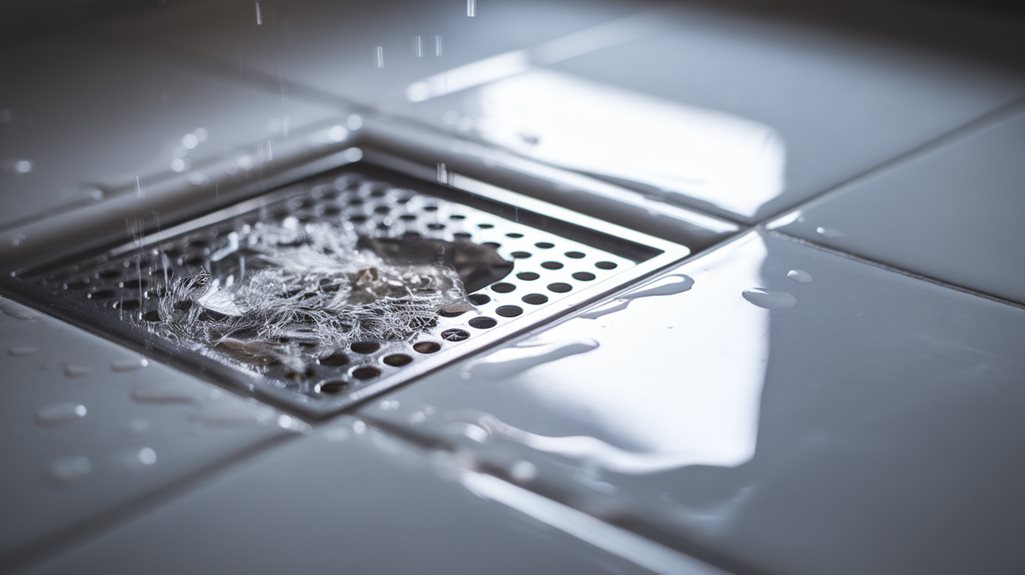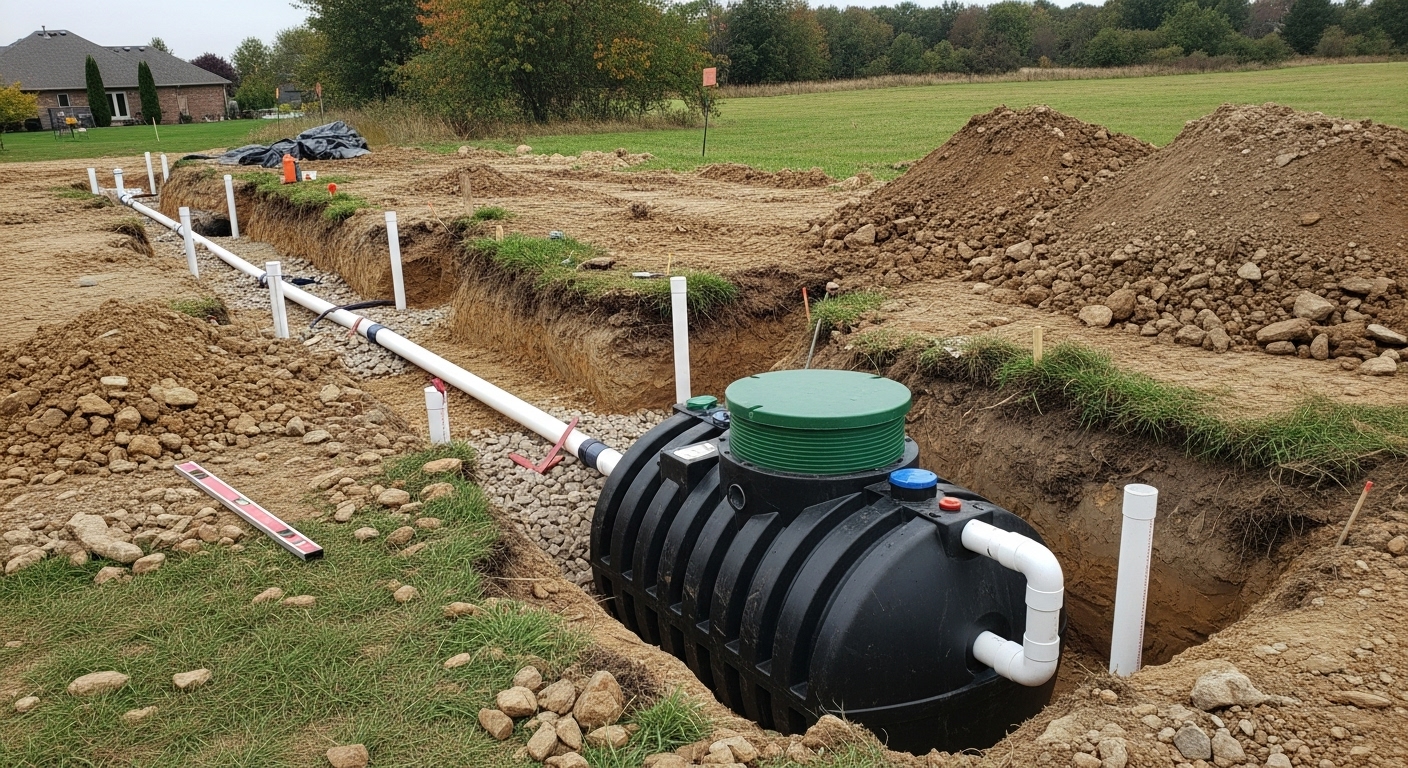

For Grande Prairie’s harsh climate, we typically recommend multiple-chamber aerobic septic systems with proper insulation. These systems maintain efficiency despite extreme temperature fluctuations, handle both reduced snowfall and increased rainfall events, and work effectively in the region’s soils. Their superior pathogen removal, reduced clogging risk, and 20-30 year lifespan offer better long-term value than conventional alternatives. Explore how these systems specifically address local challenges.
While many homeowners focus on the basic functionality of septic systems, Grande Prairie’s unique climate presents challenges that demand specialized solutions.
We live in one of Alberta’s most climate-stressed regions. The Grande Prairie area experiences extreme temperature fluctuations that wreak havoc on conventional septic designs. with winter temperatures plummeting from +2°c to -18°c within days, even insulated systems struggle to maintain efficiency. Recent weather data shows that Grande Prairie experienced a significant frontal passage that dramatically changed local conditions.
Our region’s precipitation patterns only compound these challenges. reduced snowfall during el niño periods leaves our soils vulnerable to moisture deficits, while increasing rainfall episodes overwhelm standard drainage capacities.
Soil composition serves as the foundation for every septic system decision we make in Grande Prairie. Our assessment always includes texture analysis, permeability testing, and water table evaluation. When we conduct percolation tests, we’re looking for moderate absorption rates between 1-10 minutes per inch – the sweet spot for effective filtration. The perc test provides essential data on how quickly water moves through soil, ensuring we select systems that match the drain field requirements. For properties with high clay content or shallow groundwater (common challenges locally), we recommend either mound systems or aerobic solutions that enhance treatment effectiveness. Soil substitution with engineered materials can also overcome problematic native soil conditions.
When selecting a septic system for your Grande Prairie property, understanding the fundamental differences between traditional and advanced options is essential. We find conventional systems offer simpler installation at 25-40% lower initial cost, but aerobic systems provide superior environmental protection and often last longer. Conventional systems rely on natural processes for treating wastewater without requiring additional mechanical components.
Key comparison points include:
Multiple-chamber septic systems represent an ideal solution for Alberta properties, especially in Grande Prairie’s unique climate conditions. These systems feature plastic chambers that remain functional even in subzero temperatures, making them winterproof for our harsh climate.
We’ve found that multiple-chamber designs offer twice the filtering capacity of traditional systems, extending their lifespan by slowing sediment buildup. They’re also remarkably adaptable to Alberta’s diverse soil types, whether you’re dealing with clay-rich or sandy terrain. The chambers distribute wastewater evenly, preventing saturation and cold-weather malfunctions. Licensed professionals with a Private Sewage Certificate are required to install these systems properly according to provincial standards.
While installation costs typically range from $25,000 to $30,000, the investment pays off through reduced maintenance needs and a potential lifespan of 15-40 years. These systems also guarantee compliance with Alberta’s 2021 Standard of Practice for wastewater management.
Aerobic septic systems truly excel in Grande Prairie’s harsh northern conditions, offering unmatched performance when traditional systems struggle. We’ve found these systems deliver superior effluent quality with lower BOD5, TSS, and fecal coliform levels, making them ideal for Alberta’s ecologically sensitive areas.
These advanced systems are particularly well-suited for northern properties because:
The high-quality, odorless effluent allows for smaller leach fields, providing significant space savings while enabling effective treatment even during the harshest winter conditions. The disinfecting stage using UV light or chlorine ensures that the final effluent meets stringent health standards before disposal or reuse.
Grande Prairie’s unforgiving winters demand special attention for septic system owners. When temperatures plummet, proper insulation becomes essential—we recommend applying organic layers like straw or mulch over tanks and drain fields to prevent freezing.
We’ve found that maintaining bacterial activity is important during cold months. Consider using septic-safe additives to boost microbial breakdown when natural processes slow down, and avoid chemical cleaners that disrupt your system’s ecosystem.
For maximum protection, we suggest scheduling pre-winter inspections and pumping before the cold sets in. Install heat tape on exposed pipes and never compact snow over septic components—natural snow provides better insulation. Watch for warning signs like slow drains, gurgling noises, or unpleasant odors that indicate your system needs attention before winter arrives.
Don’t forget to mark your septic components with stakes to prevent damage during snow removal, and keep emergency contact information for certified technicians who specialize in cold-weather repairs.
Maneuvering the regulatory landscape for septic installations in Grande Prairie requires careful attention to local and provincial requirements. All installations must comply with Alberta’s 2021 Standard of Practice and the Safety Codes Act. We’ve found that understanding these key regulations can save homeowners significant headaches during the permitting process. Applications for private sewage permits can be conveniently submitted through the Gateway portal online.
Key regulatory requirements include:
Several real-world examples demonstrate the effectiveness of properly designed septic systems across Grande Prairie’s diverse landscapes. We’ve documented numerous success stories where customized solutions have performed excellently despite our region’s unique challenges.
These installations showcase how proper selection and professional implementation deliver long-term performance and value. Our qualified technicians provide septic system install and maintenance to ensure each septic system is installed with precision and attention to detail for optimal functionality.